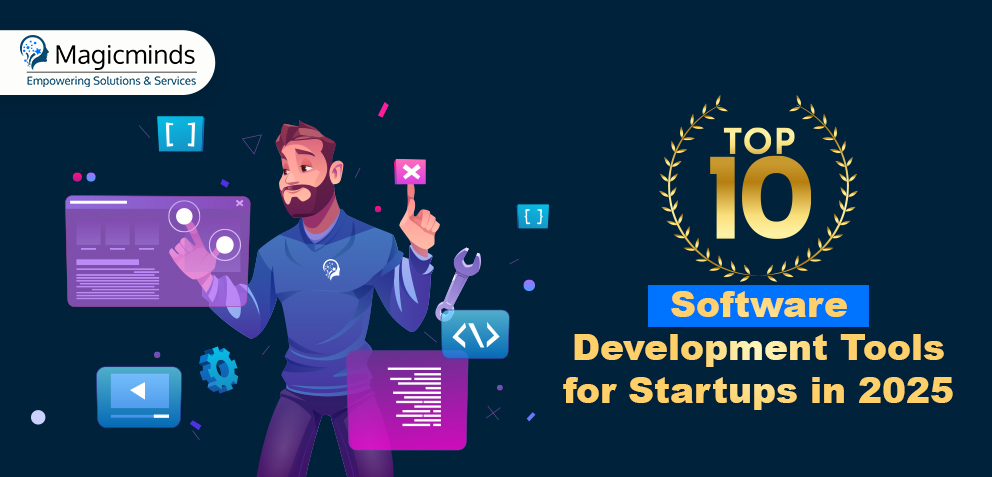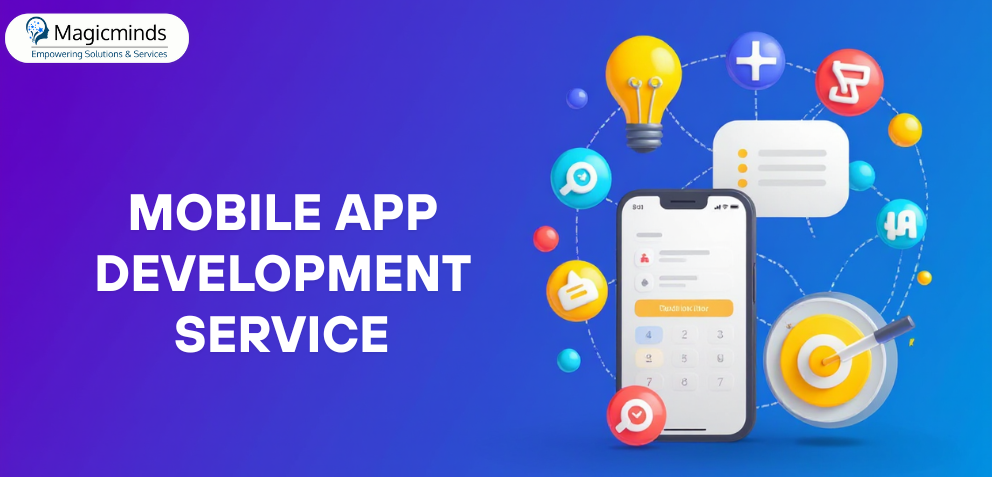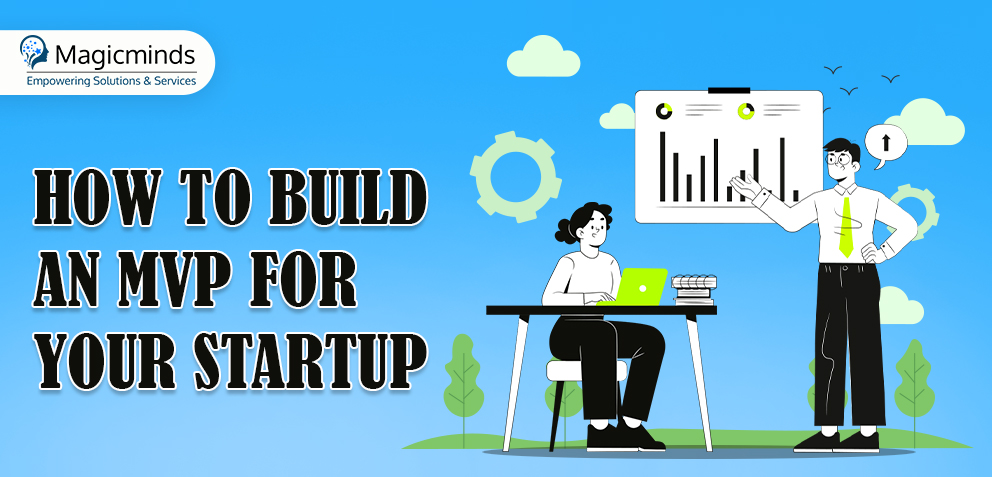Top 10 Software Development Tools for Startups in 2025

 Stay In-the-loop
Stay In-the-loop
Get fresh tech & marketing insights delivered right to your inbox.
Share this Article
Tags
Category
- .Net Developer
- Adtech
- Android App Development
- API
- App Store
- Artificial Intelligence
- Blockchain Development
- Chatbot Development
- CMS Development
- Cybersecurity
- Data Security
- Dedicated Developers
- Digital Marketing
- Ecommerce Development
- Edtech
- Fintech
- Flutter app development
- Full Stack Development
- Healthcare Tech
- Hybrid App Development
- iOS App Development
- IT Project Management
- JavaScript development
- Laravel Development
- Magento Development
- MEAN Stack Developer
- MERN Stack Developer
- Mobile App
- Mobile App Development
- Nodejs Development
- Progressive Web Application
- python development
- QA and testing
- Quality Engineering
- React Native
- SaaS
- SEO
- Shopify Development
- Software Development
- Software Outsourcing
- Staff Augmentation
- UI/UX Development
- Web analytics tools
- Wordpress Development
Startups are racing to compete with technological advances. With 70% of startups using collaborative cloud tools, choosing the right software tools can either enable or stall business progress. Ensuring a trustworthy, versatile, and superior tech stack and This indicates that a startup needs the appropriate tools to achieve a significant competitive advantage. By following this guide, one can obtain insights on collaboration and agility, must-have strategies, criteria for selection, along with other pointers on the startup software development costs for 2025.
Criteria for Selecting Development Tools
Certain criteria become important when deciding which tools suit a development project, especially for startups. For any ambitious team, these criteria become essential:
- Scalability: Will the tool accommodate your growth in user numbers?
- Integration: Does it need to be incorporated into your stack?
- Usability: Can the tool be used without a great deal of training?
- Support and Community: Is help available anytime it is needed?
- Security: Are processes and data safeguarded as per the industry’s expectations?
- Cost-effectiveness: Is the pricing reasonable and affordable for a startup?
According to research conducted in 2024 by Stack Overflow, 88 percent of successful startups placed these priorities when building their technology stack.
Custom Software Development for Startups
Build, Launch, and Scale with Magicminds' Expertise.
Top 10 Software Development Tools for Startups in 2025
Moving on, below are some of the important tools for software development in startups in 2025:
1. GitHub
GitHub supports more than 100 million user repositories worldwide and remains the center of collaboration and version control. Its dependency management and code review features, along with strong integration into CI/CD pipelines, make it irreplaceable. In 2025, AI-enabled security notifications and code suggestions on GitHub will help teams deliver higher-quality products faster.
2. Docker
Containerization stands as fundamental in maintaining consistency throughout development, testing, and production. Docker eliminates the “works on my machine” redundancy and is vital to microservices architecture. Over 80 percent of cloud-native startups now use Docker in production.
3. Magicminds
Operating out of the USA, along with India and Australia, Magicminds is a frontrunner in custom software development and marketing solutions. They are an award-winning, aim-driven digital transformation partner that helps clients re-strategize technology integration into their business processes. Their extensive background in AI, web and mobile applications, blockchain, and digital marketing has positioned them as trusted partners for companies around the globe, at any stage of their business. Their agile working empowers your ideas through their ever-ready developers and marketers to build that success story.
4. Algolia
The software development lifecycle is accelerated and simplified for leading enterprises, thereby optimizing codebase maintenance. They empower developers. The goal is to design and implement software that operates in edge computing environments and includes built-in cryptographic functions.
5. React
Teams can create sleek and dynamic user interfaces with React, which continues to lead the way in frontend framework development. With over 40% of new web applications opting to use React by 2024, its component-based structure and vast ecosystem greatly boost development.
6. Jira
Often identified with bug tracking, Jira also serves as an agile project management tool with a comprehensive scope. With customizable workflows, sprint planning, and deep integrations, Jira caters to orderly transparency for startups with teams ranging from 2 to 200 developers.
7. Slack
Effective or ineffective communication can determine the success of startups. Bots, app integrations, channels, and messaging can all be done through Slack. Companies using Slack report a faster pace of decision-making as well as a 32% reduction in email traffic.
8. Postman
APIs aid in the construction of present-day software. Postman helps developers with time-saving automated collaboration, documentation, and testing features. In 2025, AI-powered test generation and API monitoring will be essential for maintaining reliability and quality.
9. CircleCI
For rapid teams, Continuous Integration/Continuous Deployment (CI/CD) is crucial. With automation, performance insights, and parallelization from CircleCI, startups can ship codes up to 60% faster when compared to using manual pipelines.
10. Notion
Notion integrates documentation, project management, and a knowledge base into a singular platform. Its templates and flexibility allow startups to manage tasks on time as required for assignments. Further, wikis, team member onboarding, and managers’ onboarding can be reduced by as much as 25%.
Collaboration and Agile Tools for Startups
By 2025, most companies will already have remote and hybrid work models. Tools such as Slack, Jira, and Notion are no longer just conveniences; they have become absolute necessities. Agile methodologies, paired with tools like Jira and Trello, assist in keeping startups agile and able to respond to shifts in the market. A report by Atlassian in 2023 states that project-managed agile teams outperform their non-agile counterparts by 27% in annual release frequency.
Tools Magicminds Commonly Uses
Prototyping testable MVPs and extracting valuable insights has placed Magicminds at the forefront of startup innovation accelerators, earning them accolades in MVP development.
Here’s how the Magicminds stand out:
- Rapid Prototyping: Interfaces of drag-and-drop and WYSIWYG allow for wizard-like, speedy design creation.
- User Analytics: Dashboards assist business decision-making processes by monitoring retention.
- Real-Time Feedback: Users impact pivot decisions with in-app feedback collection.
- Integrations with No-Code Slack and Firebase: These tools, as well as many others that are commonplace in startup ecosystems, enable low-code integrations.
The average reported increase for feature-validated launches by startups using Magicminds is 35%. This technique has resulted in drastic reductions in wasted idle time and resources.
Bonus: Tools for Scaling Post-MVP
Now, for the next challenge, consider these tools when you’re looking to scale after your MVP gains traction:
- For containerized applications at scale, use Kubernetes
- For sophisticated monitoring and observability, use Datadog
- For serverless infrastructure scaling, use AWS Amplify
- Segment unifies customer data across multiple platforms into a single access point.
Gartner indicates that startups utilizing these tools experience a 50% increase in performance during their second year after achieving MVP status.
Final Thoughts
As stated above, the predicted startup software development tools with some of their costs for 2025 need careful consideration; it’s not about following a trend but rather about building a strategy for growth, agility, and innovation within the company. The tools mentioned above, including GitHub and Docker as well as Magicminds, will enable effective collaboration and confidence in scaling. Are you considering changing the tech stack? Don’t rely solely on random tool selection. Professional guidance aids in seamlessly implementing a technology stack tailored for 2025. From MVP launch to scaling, the proper assistance saves time, money, and frustration. If this guide was helpful, check out the ever-evolving world of software development with our in-depth resources.
Startups are racing to compete with technological advances. With 70% of startups using collaborative cloud tools, choosing the right software tools can either enable or stall business progress. Ensuring a trustworthy, versatile, and superior tech stack and This indicates that a startup needs the appropriate tools to achieve a significant competitive advantage. By following this guide, one can obtain insights on collaboration and agility, must-have strategies, criteria for selection, along with other pointers on the startup software development costs for 2025.
Criteria for Selecting Development Tools
Certain criteria become important when deciding which tools suit a development project, especially for startups. For any ambitious team, these criteria become essential:
- Scalability: Will the tool accommodate your growth in user numbers?
- Integration: Does it need to be incorporated into your stack?
- Usability: Can the tool be used without a great deal of training?
- Support and Community: Is help available anytime it is needed?
- Security: Are processes and data safeguarded as per the industry’s expectations?
- Cost-effectiveness: Is the pricing reasonable and affordable for a startup?
According to research conducted in 2024 by Stack Overflow, 88 percent of successful startups placed these priorities when building their technology stack.
Top 10 Software Development Tools for Startups in 2025
Moving on, below are some of the important tools for software development in startups in 2025:
1. GitHub
GitHub supports more than 100 million user repositories worldwide and remains the center of collaboration and version control. Its dependency management and code review features, along with strong integration into CI/CD pipelines, make it irreplaceable. In 2025, AI-enabled security notifications and code suggestions on GitHub will help teams deliver higher-quality products faster.
2. Docker
Containerization stands as fundamental in maintaining consistency throughout development, testing, and production. Docker eliminates the “works on my machine” redundancy and is vital to microservices architecture. Over 80 percent of cloud-native startups now use Docker in production.
3. Magicminds
Operating out of the USA, along with India and Australia, Magicminds is a frontrunner in custom software development and marketing solutions. They are an award-winning, aim-driven digital transformation partner that helps clients re-strategize technology integration into their business processes. Their extensive background in AI, web and mobile applications, blockchain, and digital marketing has positioned them as trusted partners for companies around the globe, at any stage of their business. Their agile working empowers your ideas through their ever-ready developers and marketers to build that success story.
4. Algolia
The software development lifecycle is accelerated and simplified for leading enterprises, thereby optimizing codebase maintenance. They empower developers. The goal is to design and implement software that operates in edge computing environments and includes built-in cryptographic functions.
5. React
Teams can create sleek and dynamic user interfaces with React, which continues to lead the way in frontend framework development. With over 40% of new web applications opting to use React by 2024, its component-based structure and vast ecosystem greatly boost development.
6. Jira
Often identified with bug tracking, Jira also serves as an agile project management tool with a comprehensive scope. With customizable workflows, sprint planning, and deep integrations, Jira caters to orderly transparency for startups with teams ranging from 2 to 200 developers.
7. Slack
Effective or ineffective communication can determine the success of startups. Bots, app integrations, channels, and messaging can all be done through Slack. Companies using Slack report a faster pace of decision-making as well as a 32% reduction in email traffic.
8. Postman
APIs aid in the construction of present-day software. Postman helps developers with time-saving automated collaboration, documentation, and testing features. In 2025, AI-powered test generation and API monitoring will be essential for maintaining reliability and quality.
9. CircleCI
For rapid teams, Continuous Integration/Continuous Deployment (CI/CD) is crucial. With automation, performance insights, and parallelization from CircleCI, startups can ship codes up to 60% faster when compared to using manual pipelines.
10. Notion
Notion integrates documentation, project management, and a knowledge base into a singular platform. Its templates and flexibility allow startups to manage tasks on time as required for assignments. Further, wikis, team member onboarding, and managers’ onboarding can be reduced by as much as 25%.
Collaboration and Agile Tools for Startups
By 2025, most companies will already have remote and hybrid work models. Tools such as Slack, Jira, and Notion are no longer just conveniences; they have become absolute necessities. Agile methodologies, paired with tools like Jira and Trello, assist in keeping startups agile and able to respond to shifts in the market. A report by Atlassian in 2023 states that project-managed agile teams outperform their non-agile counterparts by 27% in annual release frequency.
Tools Magicminds Commonly Uses
Prototyping testable MVPs and extracting valuable insights has placed Magicminds at the forefront of startup innovation accelerators, earning them accolades in MVP development.
Here’s how the Magicminds stand out:
- Rapid Prototyping: Interfaces of drag-and-drop and WYSIWYG allow for wizard-like, speedy design creation.
- User Analytics: Dashboards assist business decision-making processes by monitoring retention.
- Real-Time Feedback: Users impact pivot decisions with in-app feedback collection.
- Integrations with No-Code Slack and Firebase: These tools, as well as many others that are commonplace in startup ecosystems, enable low-code integrations.
The average reported increase for feature-validated launches by startups using Magicminds is 35%. This technique has resulted in drastic reductions in wasted idle time and resources.
Bonus: Tools for Scaling Post-MVP
Now, for the next challenge, consider these tools when you’re looking to scale after your MVP gains traction:
- For containerized applications at scale, use Kubernetes
- For sophisticated monitoring and observability, use Datadog
- For serverless infrastructure scaling, use AWS Amplify
- Segment unifies customer data across multiple platforms into a single access point.
Gartner indicates that startups utilizing these tools experience a 50% increase in performance during their second year after achieving MVP status.
Final Thoughts
As stated above, the predicted startup software development tools with some of their costs for 2025 need careful consideration; it’s not about following a trend but rather about building a strategy for growth, agility, and innovation within the company. The tools mentioned above, including GitHub and Docker as well as Magicminds, will enable effective collaboration and confidence in scaling. Are you considering changing the tech stack? Don’t rely solely on random tool selection. Professional guidance aids in seamlessly implementing a technology stack tailored for 2025. From MVP launch to scaling, the proper assistance saves time, money, and frustration. If this guide was helpful, check out the ever-evolving world of software development with our in-depth resources.


